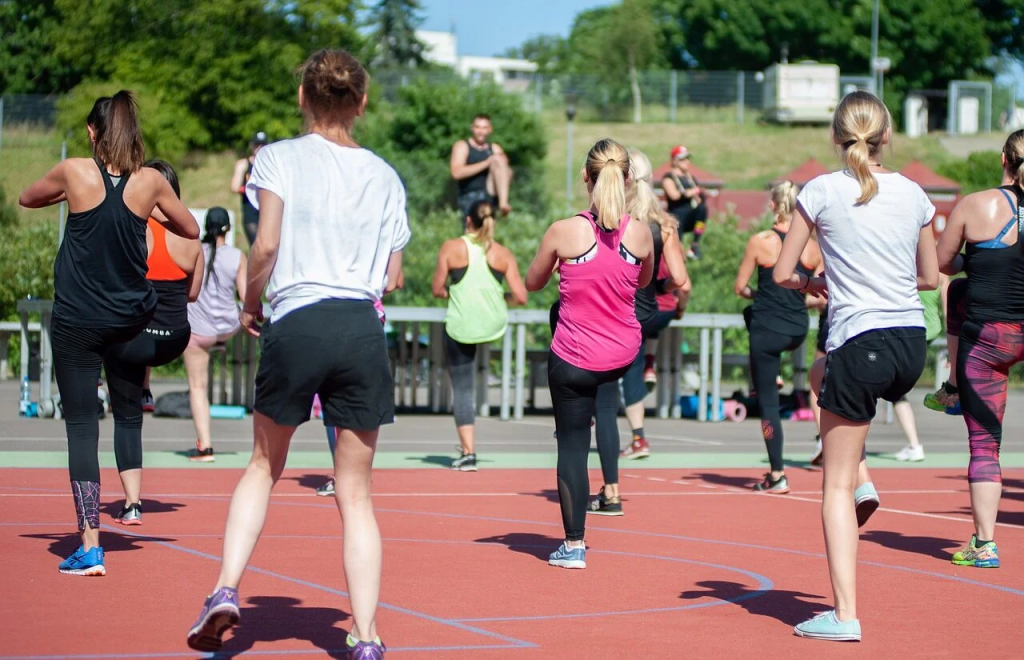The Key to Living a Long and Healthy Life: Exercise and Lifestyle Choices
The Key to Living a Long and Healthy Life: Exercise and Lifestyle Choices

In our quest for a longer, healthier life, we’ve often sought the mythical “Fountain of Youth.” While we may not have discovered any miraculous remedies or technologies that can extend our lives beyond a century, numerous studies have shown that simple lifestyle changes can significantly improve our overall health and increase our lifespan. Exercise, in particular, has emerged as a crucial factor in promoting longevity. In this article, we will explore the link between exercise and living a long and healthy life, delving into the different types of exercise, their combinations, and the reasons behind their positive effects on our wellbeing.
The Impact of Exercise on Longevity

Researchers have conducted extensive studies to understand how exercise affects our lifespan. One such study presented at the American Heart Association’s Scientific Sessions 2023 revealed that adopting eight healthy habits can slow down biological aging by up to six years. These habits include maintaining a healthy diet, managing weight, avoiding tobacco, ensuring good sleep hygiene, controlling cholesterol, blood sugar, and blood pressure levels, and most importantly, staying physically active[^1].
To delve deeper into the relationship between exercise and longevity, we turn to the insights of Dr. Borja del Pozo Cruz and Dr. Edwina Brocklesby, two experts in the field. Dr. del Pozo Cruz, a principal researcher in Applied Health Sciences at the University of Cadiz in Spain, and adjunct associate professor in the Department of Sports Science and Clinical Biomechanics at the University of Southern Denmark, has conducted several studies exploring the impact of different forms of exercise on mortality risk[^2]. Dr. Brocklesby, also known as “Iron Gran,” is the oldest British woman to complete an Ironman Triathlon at the age of 72 and is the founder and CEO of Silverfit, a non-profit organization promoting lifelong fitness[^3].
Finding the Optimal Exercise Combination

Dr. del Pozo Cruz, along with his colleagues, conducted a study published in JAMA Internal Medicine in August 2023, analyzing the data of over 500,000 participants over a 10-year period[^4]. The study examined the effects of moderate aerobic exercise, vigorous aerobic exercise, and muscle-strengthening activities on mortality risk. The findings revealed that a balanced combination of these exercises yielded the most significant reduction in overall mortality risk.
Specifically, the study indicated that engaging in approximately 75 minutes of moderate aerobic exercise, more than 150 minutes of vigorous aerobic exercise, and at least two strength training sessions per week were associated with a lower risk of all-cause mortality[^4]. When focusing on reducing the risk of death associated with cardiovascular disease, the researchers suggested combining a minimum of 150-225 minutes of moderate physical activity, around 75 minutes of vigorous exercise, and two or more strength training sessions per week[^4].
Dr. Brocklesby’s experiences as an Ironman Triathlon participant highlight the importance of incorporating different forms of exercise into our routines. The triathlon, which involves swimming, cycling, and running, necessitates a balanced combination of moderate and vigorous exercise, as well as strength training[^3].
The Minimum Exercise Requirement for Health Benefits

While athletic achievements like completing a triathlon inspire us, what about those who are less physically active? Is there a minimum threshold of exercise necessary to mitigate the risks associated with various health conditions? Dr. del Pozo Cruz and his team may have found an answer to this question.
In a study published in the European Heart Journal in December 2022, the researchers revealed that engaging in just two minutes of vigorous exercise per day could significantly reduce the risk of death related to cancer or cardiovascular events[^5]. Participants who did not engage in vigorous exercise had a 4% risk of dying within five years, but introducing less than 10 minutes of vigorous activity per week halved this risk. Those who engaged in at least 60 minutes of exercise per week further reduced their risk of death by half[^5].
Dr. del Pozo Cruz emphasized that any form of exercise, regardless of the duration, is better than a sedentary lifestyle[^6]. He also cautioned against confusing physical activity related to chores or work with deliberate exercise in a leisure context. Research has shown that physically demanding occupations, such as nursing, care, retail, and farming, can increase the risk of cognitive impairment[^6]. Therefore, it is essential to consult healthcare professionals to determine the most suitable exercise regimen for individual needs.
The Benefits and Risks of Exercise
While exercise is undeniably beneficial for our overall health and longevity, certain factors need to be considered to ensure its long-term effectiveness and safety. The type and intensity of exercise may vary depending on an individual’s age, fitness level, and specific health conditions. Consulting with healthcare providers can help tailor exercise plans to meet individual needs and goals.
Benefits of Exercise
Regular exercise provides numerous benefits that contribute to a longer, healthier life. Some key advantages include:
- Improved Cardiovascular Health: Engaging in aerobic exercises strengthens the heart, improves circulation, lowers blood pressure, and reduces the risk of cardiovascular diseases[^7].
- Weight Management: Exercise helps burn calories, build muscle mass, and increase metabolism, contributing to weight control and reducing the risk of obesity-related conditions[^8].
- Enhanced Mental Wellbeing: Physical activity stimulates the release of endorphins, known as “feel-good” hormones, which can improve mood, reduce stress, and alleviate symptoms of anxiety and depression[^9].
- Increased Bone Density: Weight-bearing exercises, such as walking, running, and weightlifting, help build and maintain bone density, reducing the risk of osteoporosis and fractures[^10].
- Improved Cognitive Function: Regular exercise has been linked to better cognitive function, memory, and reduced risk of age-related cognitive decline, including Alzheimer’s disease[^11].
- Boosted Immune System: Exercise enhances the immune system, reducing the risk of illness and promoting overall wellbeing[^12].
- Reduced Risk of Chronic Diseases: Regular physical activity decreases the risk of developing chronic conditions such as type 2 diabetes, certain types of cancer, and metabolic disorders[^13].
Risks and Precautions
While exercise offers significant benefits, it is crucial to approach it with caution, especially for individuals with specific health conditions. Some risks and precautions to consider include:
- Overexertion and Injury: Pushing the body beyond its limits or performing exercises with improper form can lead to injuries, including strains, sprains, and fractures. Gradually increasing intensity and seeking guidance from professionals can help prevent overexertion[^14].
- Cardiovascular Risks: Individuals with underlying heart conditions should consult with healthcare professionals before starting an exercise program to ensure their safety and discuss any necessary precautions[^15].
- Joint Integrity: Certain types of exercise, especially high-impact activities, can put stress on joints, potentially leading to joint problems and osteoarthritis. Choosing low-impact exercises and incorporating strength training can help maintain joint health[^16].
- Heat-related Illness: Exercising in extreme heat can increase the risk of heatstroke, dehydration, and other heat-related illnesses. Staying hydrated, wearing appropriate clothing, and exercising during cooler hours can help prevent such complications[^17].
- Individual Limitations: Each person has unique physical abilities and limitations. It is essential to listen to the body, gradually increase activity levels, and modify exercises to avoid exacerbating existing conditions or causing harm[^18].
Lifestyle Choices for Longevity
Exercise is just one piece of the puzzle when it comes to living a long and healthy life. Adopting a holistic approach to lifestyle choices is vital for overall wellbeing and longevity. Let’s explore some other essential factors to consider:
Balanced and Nutritious Diet
Maintaining a balanced and nutritious diet is crucial for optimal health. A diet rich in fruits, vegetables, whole grains, lean proteins, and healthy fats provides the necessary nutrients to support bodily functions, boost the immune system, and reduce the risk of chronic diseases[^19]. Avoiding excessive sugary, processed, and high-fat foods can help maintain a healthy weight and prevent obesity-related conditions[^20].
Adequate Sleep
Quality sleep is essential for overall health and wellbeing. Adequate sleep duration and good sleep hygiene contribute to better cognitive function, improved mood, lower stress levels, and reduced risk of chronic diseases[^21]. Establishing a consistent sleep schedule, creating a comfortable sleep environment, and engaging in relaxation techniques can promote better sleep habits[^22].
Stress Management
Chronic stress can have detrimental effects on physical and mental health. Implementing stress management techniques, such as meditation, deep breathing exercises, and engaging in activities you enjoy, can help reduce stress levels and improve overall wellbeing[^23].
Avoiding Tobacco and Limiting Alcohol Consumption
Tobacco use is a significant risk factor for numerous health conditions, including cardiovascular diseases, respiratory problems, and various types of cancer[^24]. Quitting smoking or avoiding tobacco altogether is crucial for improving longevity and reducing the risk of premature death. Similarly, excessive alcohol consumption can lead to liver disease, cardiovascular problems, and other health complications[^25]. Moderation or abstinence from alcohol is advisable for optimal health.
Regular Health Check-ups
Regular health check-ups and screenings play a vital role in identifying and preventing potential health issues. Consult with healthcare professionals to assess your overall health status, receive necessary vaccinations, and undergo screenings for conditions such as cancer, diabetes, and cardiovascular diseases[^26].
Conclusion
Exercise is a cornerstone of a long and healthy life, offering numerous benefits for physical and mental wellbeing. Finding the right balance between moderate aerobic exercise, vigorous aerobic exercise, and strength training can significantly reduce the risk of mortality and improve overall cardiovascular health. Engaging in even minimal amounts of exercise can provide substantial health benefits, making any activity better than a sedentary lifestyle.
However, it is essential to consider individual limitations, consult healthcare professionals, and adopt a holistic approach to lifestyle choices. A well-rounded routine that includes a balanced diet, adequate sleep, stress management techniques, avoidance of tobacco and excessive alcohol consumption, and regular health check-ups can further enhance longevity and overall wellbeing.
Remember, living a long and healthy life is within reach, and exercise is a powerful tool to help you achieve that goal. So, lace up your shoes, find an exercise routine that suits you, and embark on the journey towards a healthier and more fulfilling life.
“The only bad workout is the one that didn’t happen.” – Unknown
Keywords: exercise, longevity, healthy life, aerobic exercise, strength training, cardiovascular health, mental wellbeing, chronic diseases, lifestyle choices, balanced diet, sleep, stress management, tobacco, alcohol consumption, health check-ups



